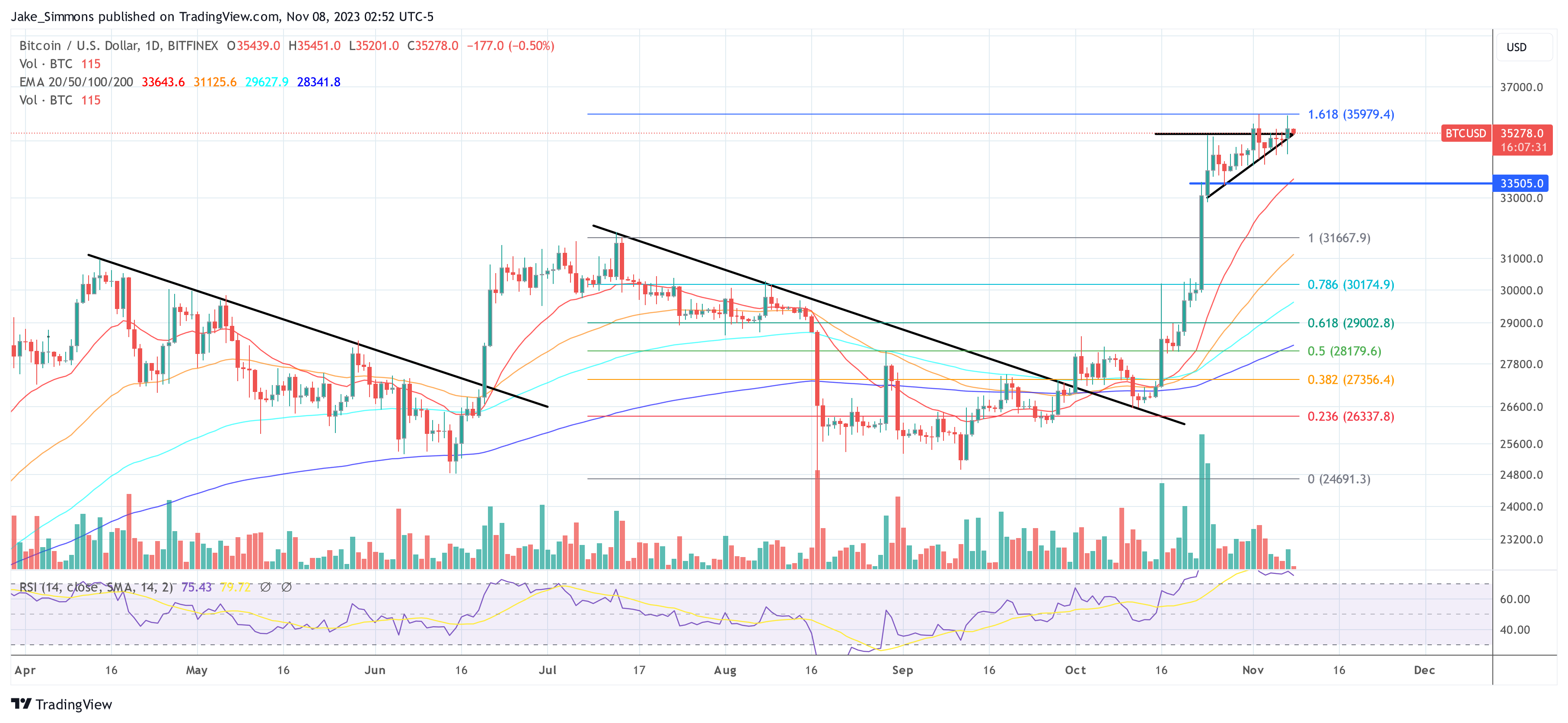In a series of insightful observations, Adam Cochran, a renowned cryptocurrency expert and founder of Cinneamhain Ventures, recently shared his analysis on the relationship between Bitcoin price movements and US Treasury auctions. Cochrans commentsDistributed primarily viaX (formerly known as Twitter), they offer a unique perspective on an emerging trend in the market, especially regarding traditional financial instruments.
Bitcoin price rises after every treasury auction
Cochran notices a clear pattern: “Some major market makers seem to be really concerned about real rates versus Bitcoin (I guess pending ETF buyers?). Every time there is a good US Treasury auction, you have about five minutes before BTC takes a lead.” This observation suggests a correlation between the outcomes of USTreasury auctions and subsequent movements in Bitcoin prices.
The essence of Cochran’s theory revolves around the concept of real interest rates and their inverse relationship with Bitcoin. Real interest rates refer to interest rates adjusted for inflation. In the traditional financial world, these interest rates influence significant investment decisions across asset classes.
Cochran argues that a successful auction of US government bonds, which typically signals lower yields (and therefore lower real interest rates), is quickly followed by a spike in Bitcoin prices. This trend, according to Cochran, is indicative of a market maker betting on large funds that allocate Bitcoin as a hedge against real interest rates.
This relationship becomes particularly important in light of the discussions surrounding Bitcoin Exchange-Traded Funds (ETFs). According to Bloomberg experts, there is a 90% chance that a spot Bitcoin ETF will gain approval by the end of the year.
One of the reasons for this is that the US Securities and Exchange Commission (SEC) has been actively communicating with applicants such as BlackRock and Fidelity in recent weeks, resulting in changes to the application. The increasing seriousness of these conversations appears to have strengthened the correlation, as noted by Cochran: “Someone is willing to bet that large funds will be allocated to Bitcoin to offset real interest rates, which would be enormous.”
Furthermore, Cochran highlights the impact of Bitcoin’s price movements on the broader financial market: “The BTC momentum on any upswing is quite clear, it will suck a lot of momentum from other parts of the market as the current catalysts are only just getting started are. a different scale.”
Backtest for the theory is still pending
In response to a question about backtesting this theory, Cochran admitted the lack of long-term data but emphasized the recent nature of this trend: “Hrm, anyone probably has that data? I just manually monitored, and the correlation has only been in the last few weeks to months since the ETF convo became serious, so a backtest with a long shelf life wouldn’t hold up.”
This recognition points to the early stages of this observed correlation. Nevertheless, Cochran’s insights provide a compelling story connecting traditional financial markets to Bitcoin. As the conversation around Bitcoin ETFs gains momentum, these observations could become increasingly relevant and provide valuable insights for investors.
At the time of writing, Bitcoin was trading at $35,278.

Featured image from Shutterstock, chart from TradingView.com












